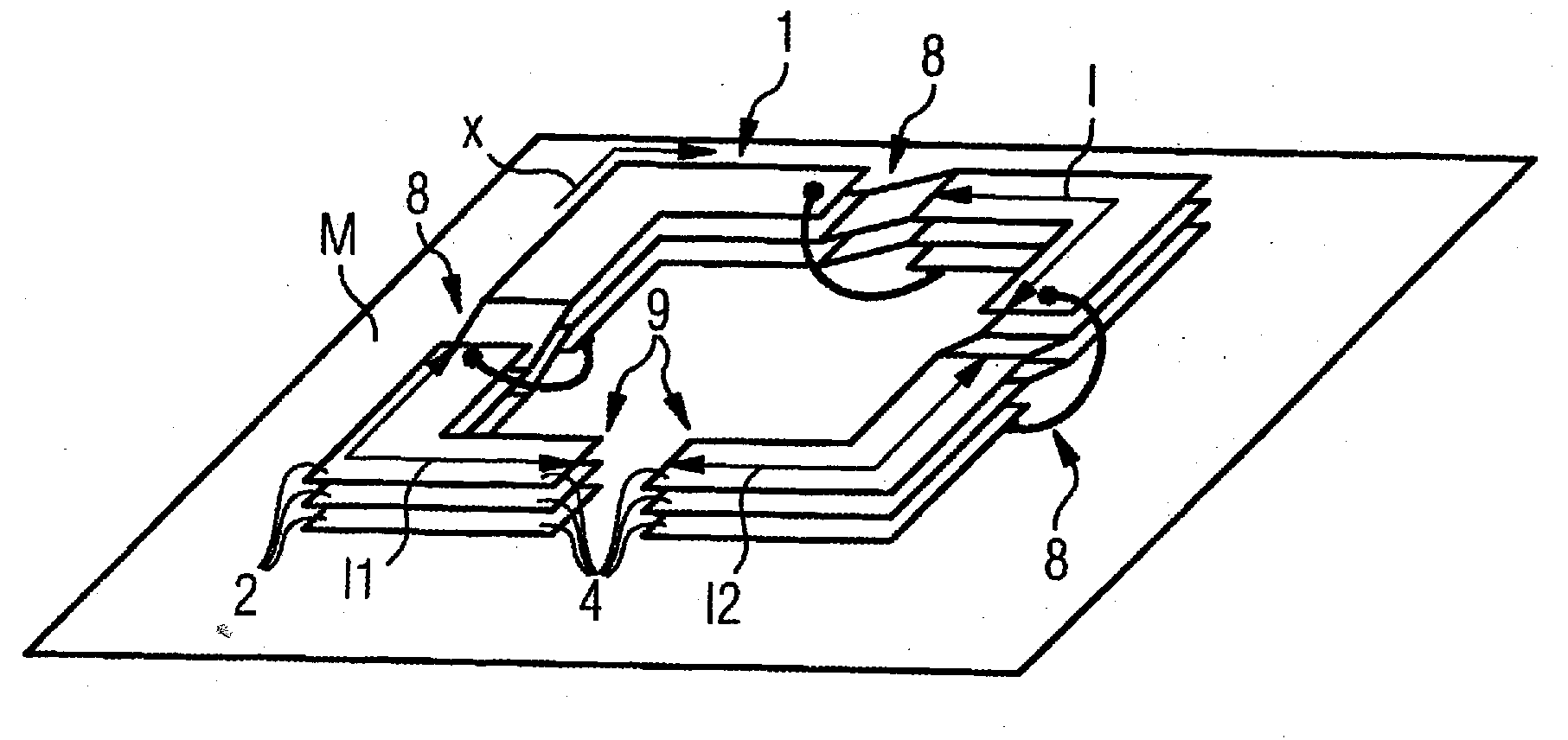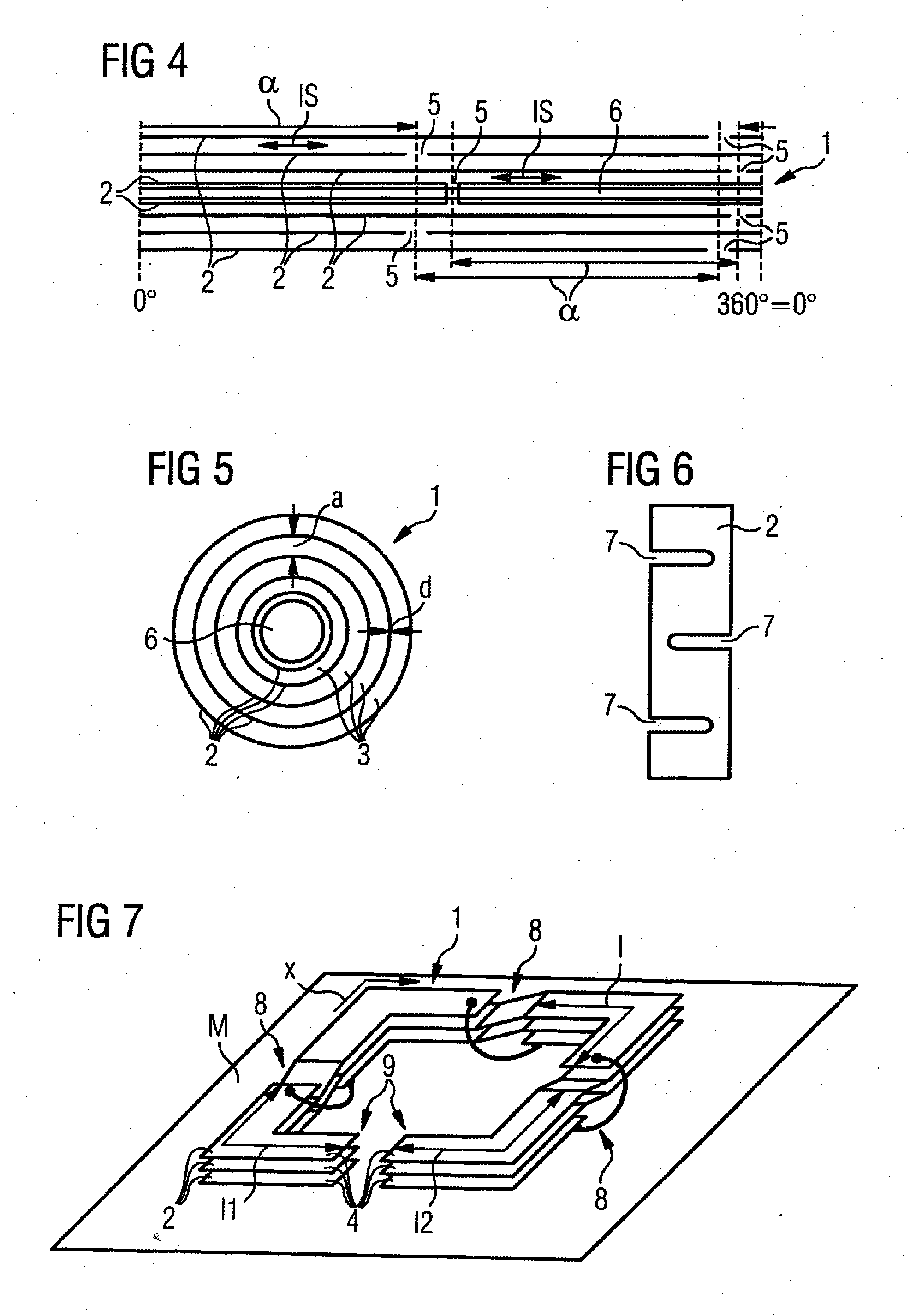Endoscopic Capsule
a magnetic resonance and endoscope technology, applied in waveguide devices, instruments, reradiation, etc., can solve the problems of significant technical expenditure, unfavorable resonator application length, and inability to achieve tuning
- Summary
- Abstract
- Description
- Claims
- Application Information
AI Technical Summary
Benefits of technology
Problems solved by technology
Method used
Image
Examples
Embodiment Construction
[0030]According to FIGS. 1 through 3, a resonator for magnetic resonance applications comprises a conductor element 1 that extends in an extension direction x. Given operation of the conductor element 1 a resonant current I oscillates with a resonance frequency f in the extension direction x in the conductor element 1.
[0031]Given magnetic resonance applications the resonance frequency f corresponds with the Larmor frequency fL of a magnetic resonance system. The conductor element 1 therefore extends over a total length L that is significantly smaller than half of the wavelength λ corresponding with the resonance frequency f. For the most part the total length L is even smaller than a quarter of the wavelength λ. Nevertheless, the conductor element 1 is tuned to the resonance frequency f. Details in this regard will be explained further.
[0032]The conductor element 1 is fashioned as a multi-layer conductor. It thus comprises a plurality of electrically-conductive layers 2 that are ele...
PUM
 Login to View More
Login to View More Abstract
Description
Claims
Application Information
 Login to View More
Login to View More - R&D
- Intellectual Property
- Life Sciences
- Materials
- Tech Scout
- Unparalleled Data Quality
- Higher Quality Content
- 60% Fewer Hallucinations
Browse by: Latest US Patents, China's latest patents, Technical Efficacy Thesaurus, Application Domain, Technology Topic, Popular Technical Reports.
© 2025 PatSnap. All rights reserved.Legal|Privacy policy|Modern Slavery Act Transparency Statement|Sitemap|About US| Contact US: help@patsnap.com



